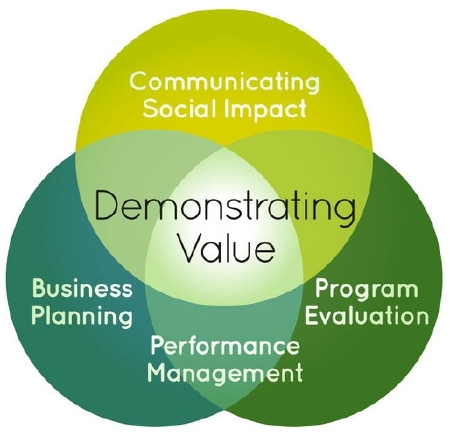How to make the process easier
Social entrepreneurs are in the business of creating positive impact. Whether in the initial planning phase or several years into operations, they work tirelessly to make our world a little bit better. But how can they be sure of what they’ve really achieved? Having your funders and clients trust your good intentions is not enough. As management guru W. Edwards Deming said, “In God we trust; all others must bring data.”
For many social enterprise managers, measuring and evaluating the impact of their enterprise is easier said than done. And sporadic attempts at impact evaluation can be the start of a bumpy road fraught with obstacles and challenges. With some planning and guidance from experienced mentors, it’s possible to develop an impact evaluation system that is manageable, affordable, and provides the depth of information that organizations need to make effective strategic and operational decisions.
Looking at today’s impact evaluation landscape
With an array of evaluation tools and resources to choose from, and no consistent standard or framework to follow, social enterprise managers often aren’t sure where to begin when it comes to impact evaluation. “It’s difficult to find a common evaluation framework that will work in a number of different situations” explains Garth Yule, manager, evaluation and community impact for Vancity Community Foundation in Vancouver. “What’s meaningful or important about the work that you’re doing can be very different from one business to another, and even for different people looking at the same business.”
But as Yule explains, “The fact that there is a multitude of ways to describe impact doesn’t need to be defined as good or bad, it’s just the way it is. The ability to look at value from different perspectives and ask different questions allows impact evaluations to be flexible according to the scale and capacity of the social enterprise. It’s more important to do a good job of collecting information on just a few key indicators than to try and be all things to all people. As a manager, it’s important to keep focused on your goals to identify the information about your impact that is essential for you to make decisions.”
With the many responsibilities and immediate concerns of running a business, social enterprise managers often don’t have the extra resources to dedicate to executing an effective impact evaluation on their own. Time, funding and intellectual capital are three roadblocks that Susan Chambers, business consultant and author of Small Business, Big Change: A Microentrepreneur’s Guide to Social Responsibility, identifies for social enterprise managers and socially responsible micro-business owners. As Chambers explains, “If it’s too complicated, or if they have to look in too many different places to piece data together and then transform that data into something that’s meaningful, they are less likely to actually do it. They’re trying to run a business, so these added responsibilities can get pushed to the side of the desk.”
Yule and Chambers help groups avoid these frustrations through the use of Demonstrating Value, an evaluation framework developed by Vancity Community Foundation.
An effective approach to impact evaluation and communication
A practical methodology for evaluation, Demonstrating Value maps goals to activities to outcomes and addresses the issues social enterprise managers face. More than just a framework, Demonstrating Value is a planning and communication tool designed to complement other emerging frameworks, build on what’s already in place, and put social enterprise managers in control of their own story.
The first step for enterprise managers is downloading the free workbook. The end product is a two to four page report called a performance snapshot; the capacity building comes from working through the process. It typically takes 40 hours of consulting time plus 60 hours from the enterprise manager over three to four months. If enterprises already have well-developed business plans and a good understanding of their logic model, it’s not hard to work out the high-priority indicators.
“Demonstrating Value can be an aggregating tool for other kinds of evaluation and performance management that people are already doing. It can give you the means of pulling the data together in a way and making it more coherent, to communicate that all those pieces are driving toward a common goal,” Yule explains. It is designed to be compatible with other impact evaluation standards like SROI, GIIRS and B Corporations.
Chambers has experience working through Demonstrating Value with various groups. She sees that for social enterprises that aren’t already engaged in evaluation, “Demonstrating Value gives managers the option to start with the data they have. We want to use indicators where they already have the information or it’s easy to collect.”
It helps social enterprise managers to choose the systems and processes that will be most beneficial to the organization. It’s not just about reporting to funders and doing something that’s required; it’s about finding a way to digest and summarize existing information that can be useful in decision making around the social enterprise. Those that find Demonstrating Value most useful, use it on a regular basis as an aid in management and planning decisions.
But social enterprise managers should remember: “It’s not a backward-looking summative evaluation,” Yule explains. “It’s not something you do at the end of your project and then say what was the impact, let’s look back over the year. It’s something that you look at to make plans for the future. It takes time and commitment, but on the capacity building front, I think Demonstrating Value is an investment that organizations can really get something back from.”
Sarah Cruickshank is communications coordinator with Demonstrating Value, a framework that combines business performance monitoring with social impact evaluation in a compact and powerful communication tool. Demonstrating Value is an initiative of Vancity Community Foundation.


